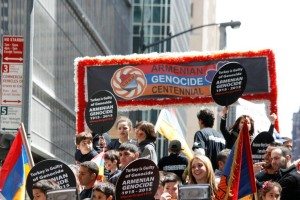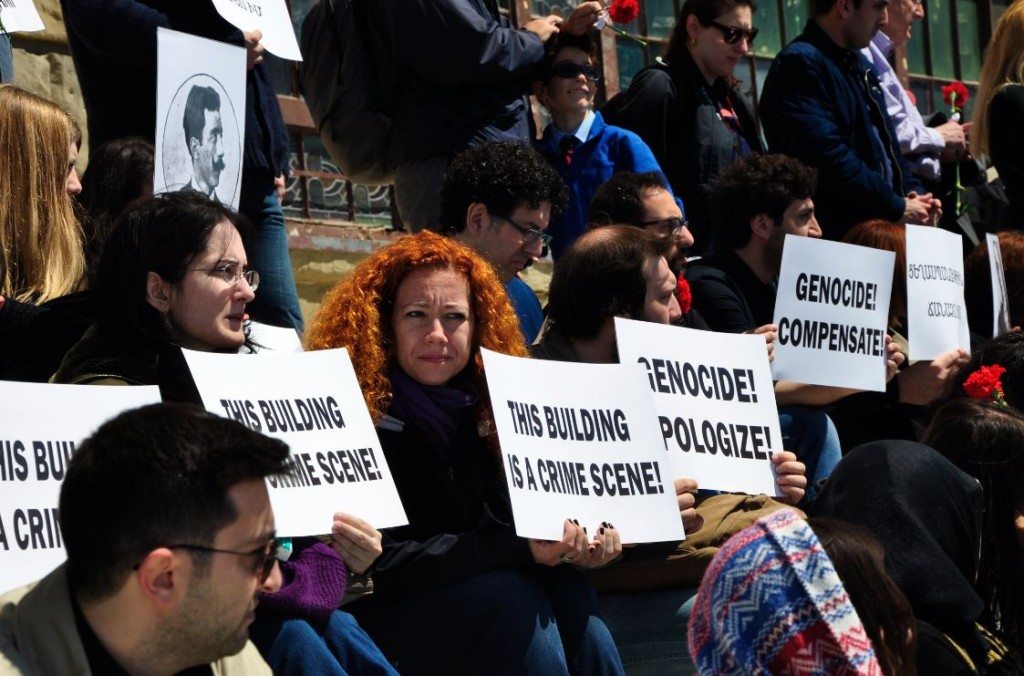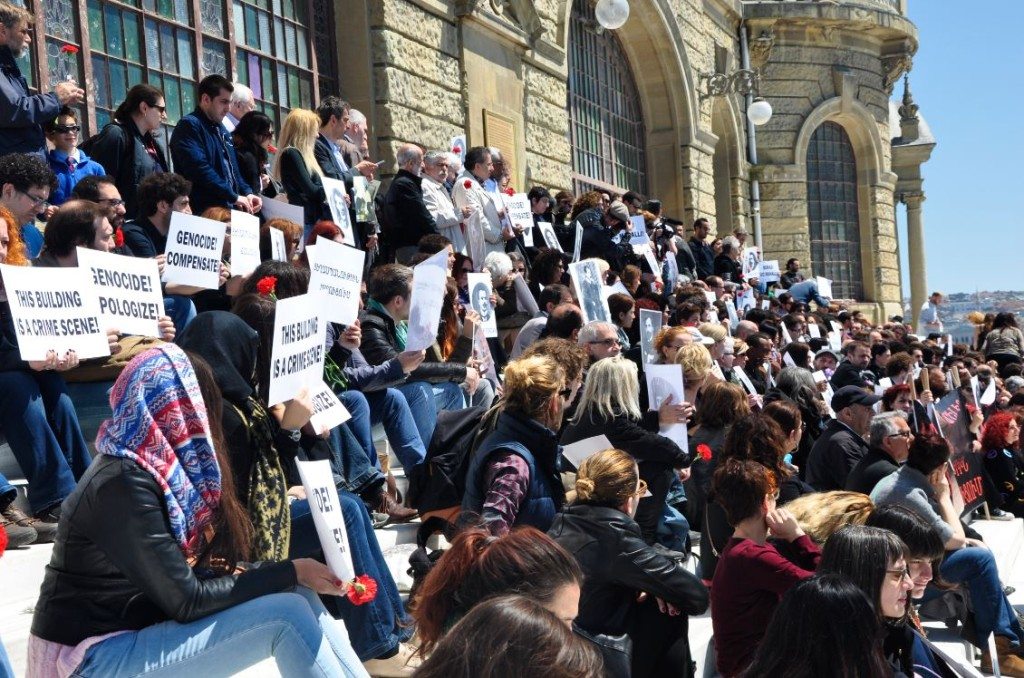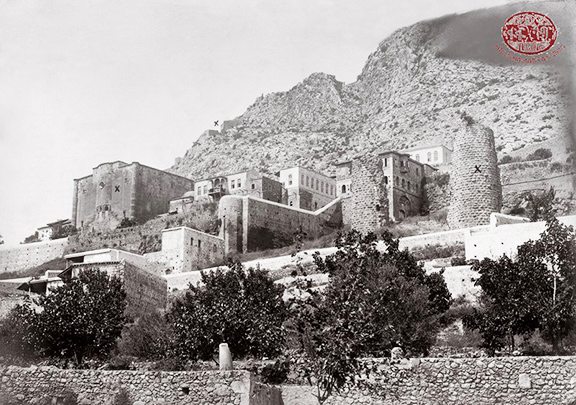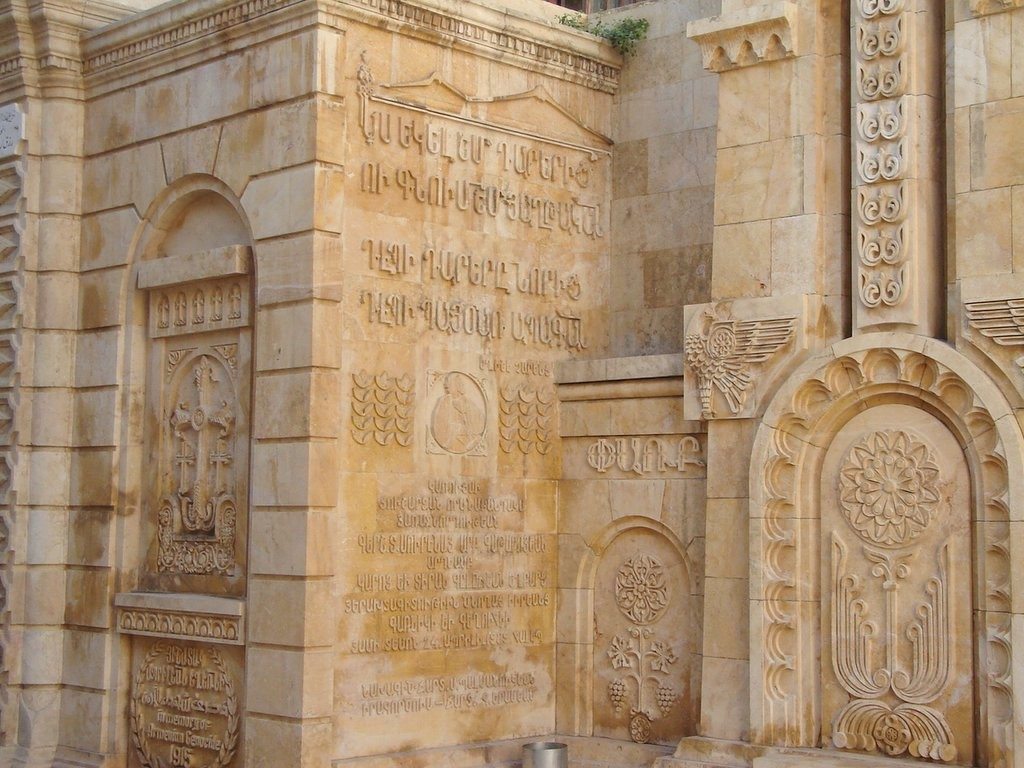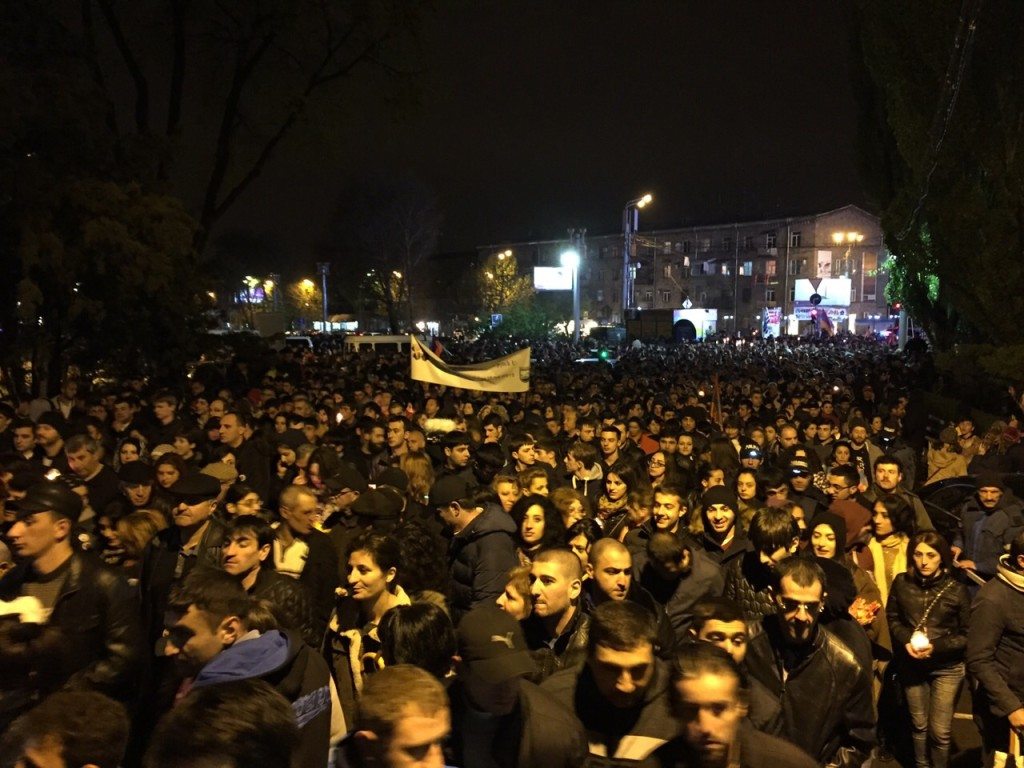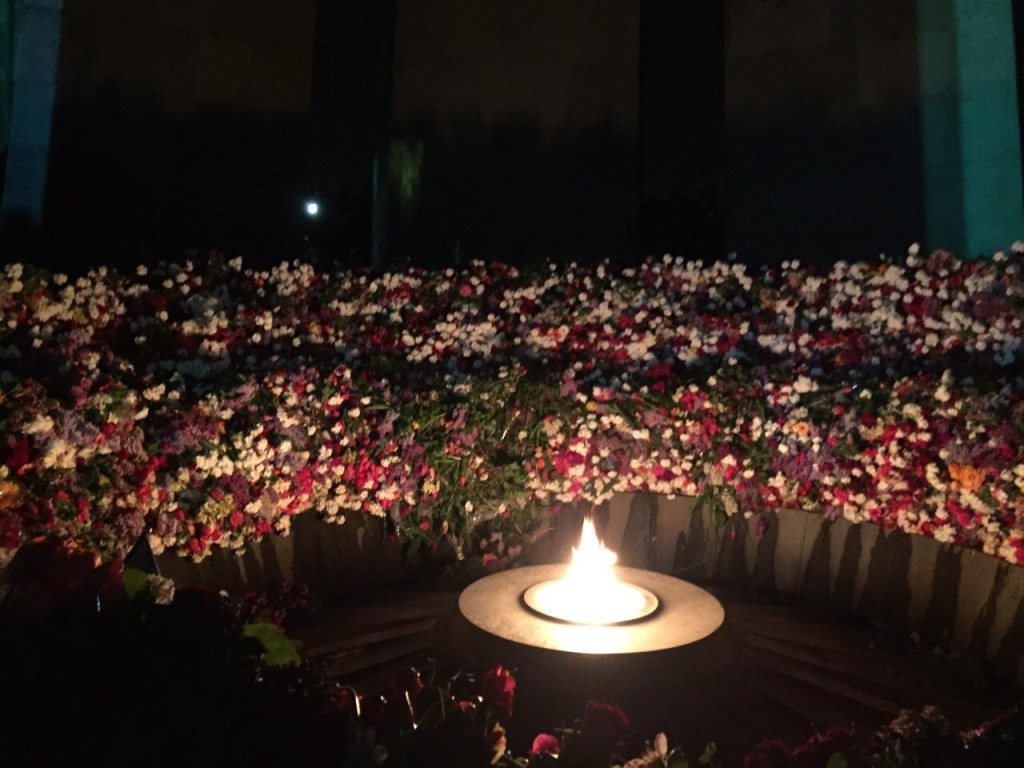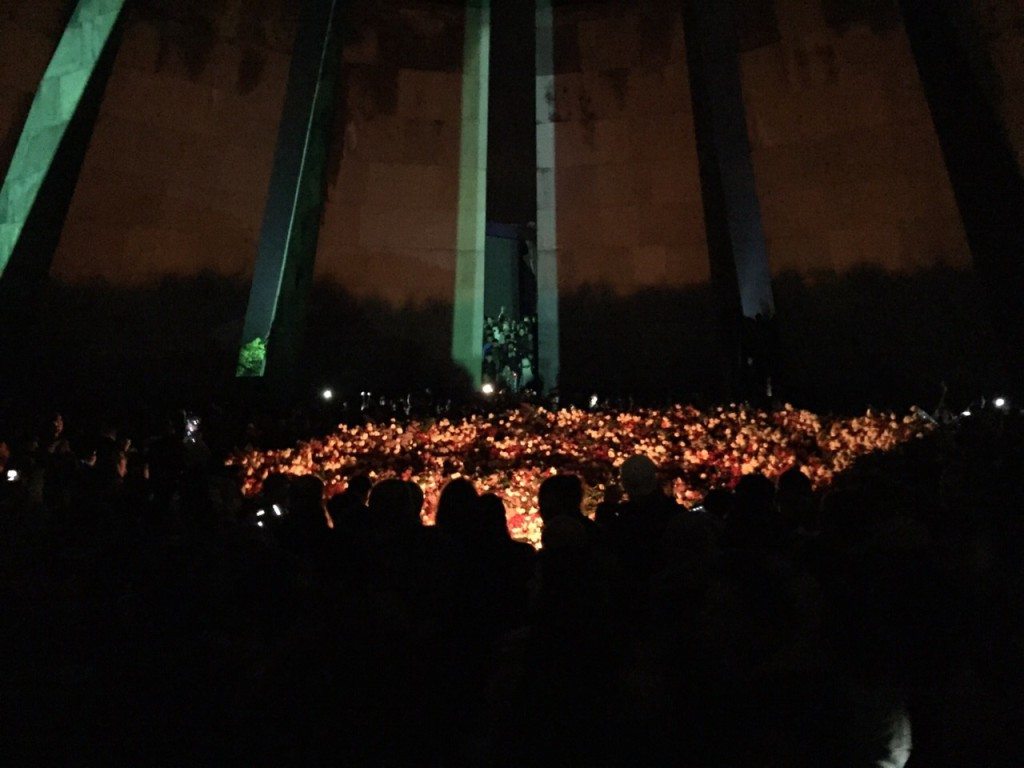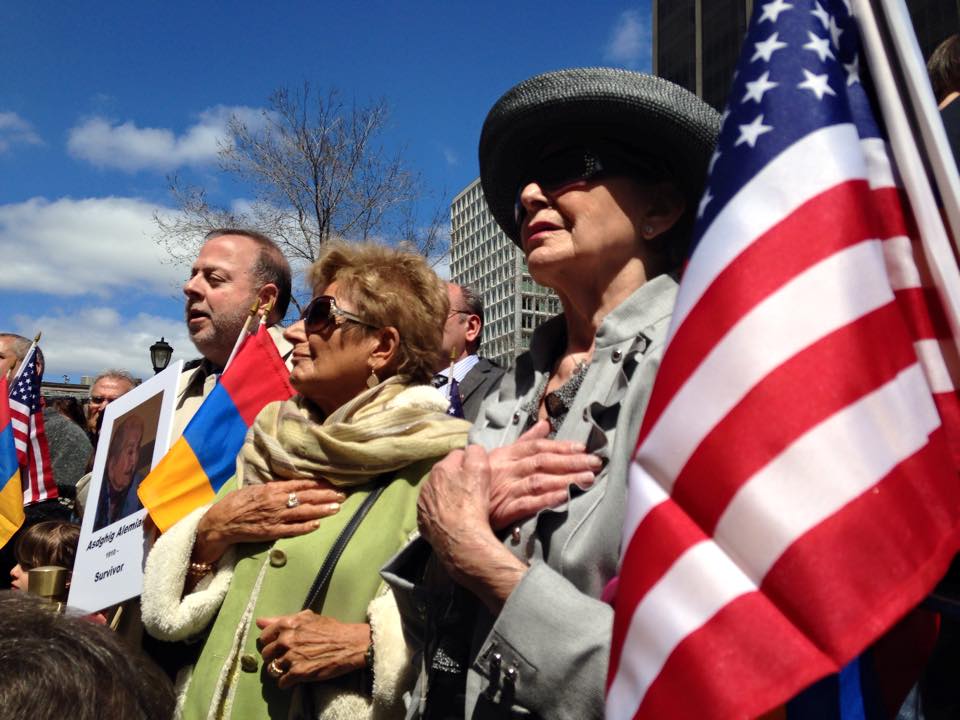The year began with Erdogan’s childish maneuver, switching the Gallipoli War Centennial to April 24, to derail the observances planned for the Armenian Genocide Centennial. The international media quickly exposed the Turkish president’s ploy, providing extensive publicity for the upcoming genocide anniversary.

Flowers placed at the Armenian Genocide Memorial m=and Monument at Dzidzernagapert in Armenia (Photo: Harout Kassabian)
Being in Armenia for the first time on April 24, and on the occasion of the Centennial, was a deeply moving experience. The Armenian government did monumental work inviting 1,000 dignitaries from 60 countries, including prominent scholars, legal experts, political leaders, parliamentarians from 30 countries, and survivors of other genocides. On April 22-23, the distinguished guests participated in a Global Forum “Against the Crime of Genocide,” where I delivered brief remarks castigating President Barack Obama’s failure to keep his promise on using the term “Armenian Genocide.” I explained that contrary to a widely held misperception, the United States has repeatedly recognized the Armenian Genocide.
On April 23, all six political parties represented in the Austrian Parliament issued a joint declaration recognizing the Armenian Genocide. As expected, Turkey overreacted by withdrawing its ambassador from Vienna. This is the second Turkish ambassador to be recalled to Ankara this month. As an increasing number of countries recognize the Armenian Genocide, Turkey may soon have fewer envoys, isolating itself from much of the world!
Also on April 23, German President Joachim Gauck delivered a powerful speech at a memorial service in Berlin, acknowledging not only the Armenian Genocide, but also Germany’s complicity in the Ottoman-Turkish genocidal campaign. Despite heavy pressure from Turkish leaders, the German Bundestag is expected to adopt a similarly worded resolution that would send shock waves throughout the 1,000 rooms of President Erdogan’s newly built palace, since Germany was Turkey’s ally in 1915, and continues its close relationship until today.
In the evening of April 23, the Catholicos of All Armenians Karekin II and the Catholicos of the Great House of Cilicia Aram I jointly presided over a historic rite of canonization in Etchmiadzin, declaring the 1.5 million Armenian Genocide victims to be Saints. Following this moving ritual, at the exact hour of 19:15 or 7:15 p.m., churches throughout the world began ringing their bells 100 times. Later that night, the System of a Down band performed a free concert at Yerevan’s Republic Square. The thousands of young people in attendance were highly energized despite the heavy downpour. The concert was aired live, disseminating the band’s genocide message to millions of people worldwide.

The
Catholicos of All Armenians Karekin II and the Catholicos of the Great
House of Cilicia Aram I jointly presided over a historic rite of
canonization in Etchmiadzin, declaring the Armenian Genocide victims to
be Saints. (Photo: Varant Meguerditchian )
One of the most stunning developments last week was Turkish Prime Minister Ahmet Davutoglu’s declaration that the Armenian “deportations were a Crime Against Humanity”—which, under international law, is tantamount to recognizing the Armenian Genocide. No one should be surprised if Erdogan dismisses Davutoglu after the June parliamentary elections.
Now that the Centennial is behind us, it is high time that Armenians turn the page on Armenian Genocide recognition and begin to systematically pursue their claims from Turkey through international, regional, and local tribunals.
